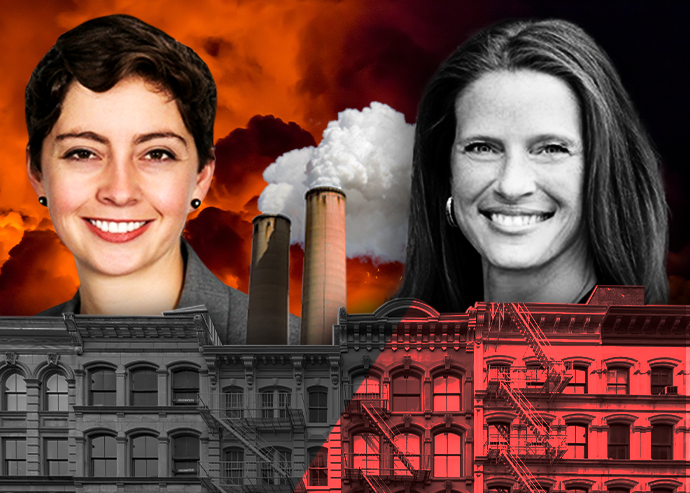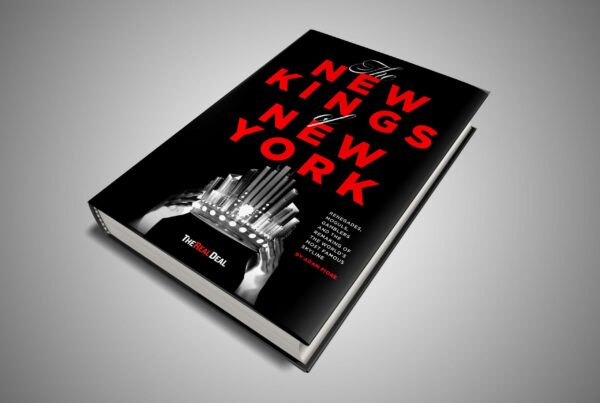
Alejandra Meija Cunningham, Decarbonization Advocate, Natural Resources Defense Council; Kim Pexton, Vice President, Sustainability, JBG Smith (NRDC, JBG Smith, iStock)
JBG Smith rang in a seemingly major accomplishment last month: carbon neutrality across a 60-plus building portfolio — and nearly a decade ahead of schedule.
The real estate investment trust had pledged last year to meet that goal by 2030 in part by curbing energy usage, installing solar panels, tapping offsite renewables and swapping electric heat for natural gas.
But the Washington, D.C-based REIT said it wanted to make a dent in the short term, too.
“Because the plan was going to happen over a 10-year period,” said Kim Pexton, the firm’s vice president for sustainability, “we felt that was too long to wait to do something that is going to be impactful now.”
So JBG Smith bought its way there, purchasing carbon offsets and renewable energy credits — in theory canceling out the company’s carbon footprint by cutting emissions somewhere else.
Recently, real estate has seen a rise in firms touting 100 percent carbon neutrality. Los Angeles’ Kilroy Realty Corporation and West Coast-focused REIT Hudson Pacific Properties both celebrated the milestone.
Not everyone is impressed.
Critics note that carbon neutrality does not align with the goals of the Paris Agreement. And it could be leading property owners — whose buildings contribute almost one-third of U.S. carbon emissions — to delay retrofits, costing themselves and the planet more in the long run.
Carbon-neutral versus net-zero
The confusion around carbon-cutting derives, in part, from industry jargon.
President Joe Biden, in his campaign pledge, committed to achieving net-zero emissions economy-wide by 2050. At a glance, carbon-neutral and net-zero seem synonymous.
The former is all about offsetting the carbon a company emits. If a firm uses a certain amount of natural gas, for example, it can claim carbon neutrality by sponsoring initiatives that reduce emissions by the same amount somewhere else.
Net-zero, the gold standard for curbing climate change, means cutting emissions as much as an entity can, then offsetting the rest.
Pexton was very clear: JBG Smith is focused on neutrality.
“Our announcement was carbon-neutral operations,” he said. “So what that means specifically is that we have offset the emissions associated with the operation of buildings.”
The firm’s offsets are paying for the spray-foam insulation industry, which spews hydrofluorocarbons into the atmosphere, to transition to lower-carbon methods. And the renewable emergency credits it bought came from a wind farm in Oklahoma; such purchases help to finance the project. Pexton declined to share what the credits and offsets cost.
Those steps are part of the company’s larger, vaguer plan to “move toward net-zero,” as Pexton put it. JBG Smith is not saying it will get there, though.
“It is very difficult to achieve on-site, net-zero energy for office and multifamily buildings,” said Pexton. JBG Smith’s portfolio only has so much roof space for solar panels, for example.
Similarly, in New York City, where buildings account for about two-thirds of greenhouse gas emissions, prominent developers such as Douglas Durst have criticized the city for pushing owners to decarbonize buildings rather than offset them by buying renewable energy credits created beyond the five boroughs.
“Do the right thing”
Supporters of offsets note that for the same money, they can achieve greater emissions reductions than a property owner might accomplish with internal changes. Even eco-activists are reluctant to dismiss the benefits of offsets.
“I don’t want to invalidate people trying to do the right thing,” said Alejandra Meija Cunningham, decarbonization advocate at the Natural Resources Defense Council. She noted that for those who are not revamping their properties to slash emissions, the offsets certainly achieve some degree of decarbonization.
However, advocates are adamant that shooting for carbon-neutral will not stop global warming. The climate crisis demands net-zero.
“Even if you buy offsets, you’re still burning fossil fuels and dealing with the air pollution aspect,” Cunningham said. “You will never be able to address with offsets [the emissions] that might be coming from another country, another state, or even a different side of the city.”
Cunningham said decarbonizing buildings requires cutting usage, such as by weather-proofing buildings and installing efficient appliances and thermostats, and using cleaner fuel, such as electricity (especially from solar or hydropower) instead of natural gas.
For owners of older properties, notably those with shoddy building envelopes and gas heat, retrofitting buildings to meet the city’s forthcoming emissions standards is costly. The Urban Green Council estimated that achieving Local Law 97’s goals of 40 percent reduction by 2030 could cost owners of large New York buildings $20 billion.
Kate Frucher, co-founder of green technology incubator the Clean Fight, said small owners with fewer resources have been less likely to begin optimizing their buildings.
But Cunningham said with regulatory and existential deadlines approaching, it is crucial that landlords replace aging systems, rather than depend on offsets to cover their emissions.
If owners aren’t making those changes gradually or are building developments that rely on fossil fuel, the environmental advocate said, they are destined to hit a wall.
“Twenty years down the road we’re really going to have to start ripping out existing functioning equipment, and that will create a lot of unnecessary value loss,” she said.



